The lore and history of Azeroth are full of ancient mysteries and stories, where colossal empires have risen and fallen, and numerous heroes have written their names into the chronicles of this game universe with hundreds of epic achievements. World of Warcraft’s lore pulses through every quest, bossfight, and every faction met.
From the majestic heights of the Wyrmrest Temple to the deepest dungeons of Blackrock Depths, each location in WoW is steeped in history. The story begins eons ago, with the Titans, god-like beings wandering the cosmos, discovering Azeroth as a developing world brimming with potential. But with creation comes conflict, and thus began the age-old battles against the chaotic forces seeking to unravel the fabric of this world.
While playing the game, players find themselves in the middle of old conflicts, dealing with the fallen Lich King, the Wrath of the Legion, and the corruption of the Old Gods. Moreover, Azeroth’s history is really dynamic, which makes the game interesting to play for the fans of various secrets and Easter eggs. Events like the Cataclysm have changed continents, and expansions like BFA have changed political alliances. The world’s history includes the rise and fall of factions, and battles between forces with huge armies and legendary leaders.
In this article, we’ll explore the universe’s core, review its lore and historical changes over almost 20 years, and try to predict what might happen next.
Origins of Azeroth and the Cosmic Titans
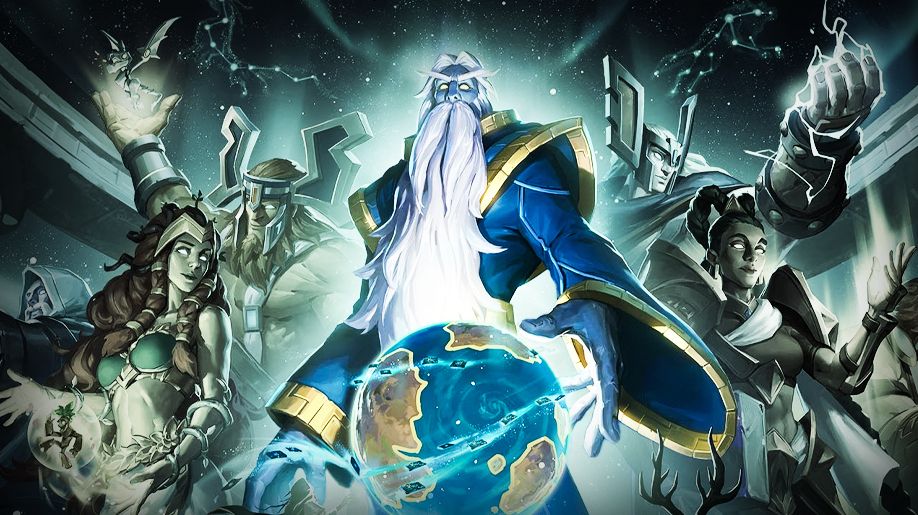
The origins of Azeroth are tied to the lore of the cosmic Titans. These god-like beings found a powerful entity called a Titan world-soul inside the planet’s core.
The Titans decided to shape and nurture this world. They created the planet’s landscapes and formed mountains, oceans, and continents. During this early time, elemental lords, powerful beings born from the planet’s energies, also appeared. However, these guys were unpredictable and wreaked havoc around themselves.
As the Titans brought order and controlled the elemental lords, Azeroth became more stable. The first inhabitants, created by the Titans, began to appear. These early races were meant to protect and shape the world. Their efforts laid the groundwork for a history full of conflict, heroism, and the ongoing struggle between order and chaos. We’ll tell you more about those ancient times below.
Titans vs. Sargeras
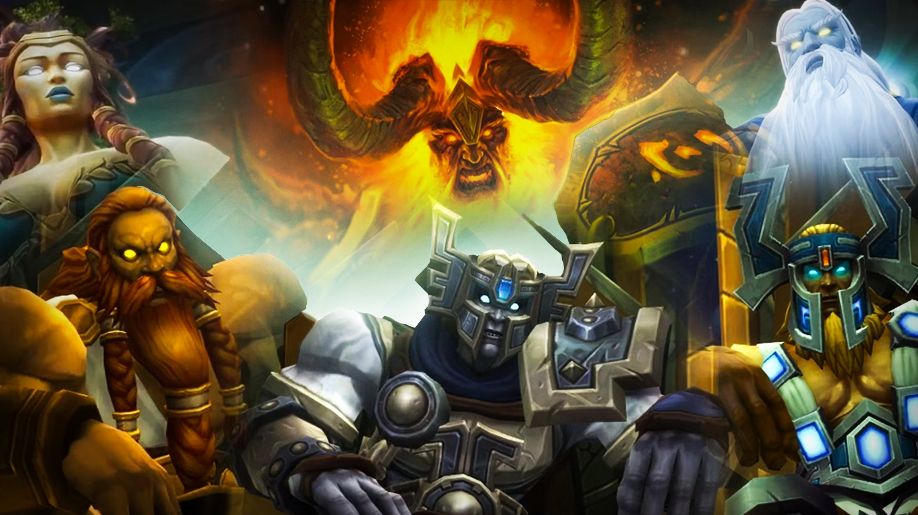
In the history of Azeroth and the Titans, one figure stands out: Sargeras. He was once a noble defender but became a bringer of doom. Sargeras was one of the strongest Titans. His job was to guard against demons from the Twisting Nether, who wanted to destroy the Titans’ work.
Over time, fighting endless demons made Sargeras lose hope. He discovered that elemental lords, evil beings, aimed to corrupt a new Titan world-soul. This made him lose faith in his mission. Sargeras believed the only way to save the universe was to destroy it and start again.
Sargeras created the Burning Legion, a huge army of demons. He even corrupted the Eredar, a smart race, turning them into his demonic lieutenants, the Man’ari. Step by step, it became clear that Sargeras had completely rejected his old ideals.
His betrayal shocked the other Titans, leading to a cosmic war. Sargeras and his Burning Legion fought against the forces of order and creation. The Burning Legion’s campaign caused destruction across the cosmos. Many worlds were destroyed, and civilizations fell. Sargeras’s actions dramatically changed the universe’s destiny. These ancient events still affect the present, shaping the lives of everyone in Azeroth.
War of the Ancients
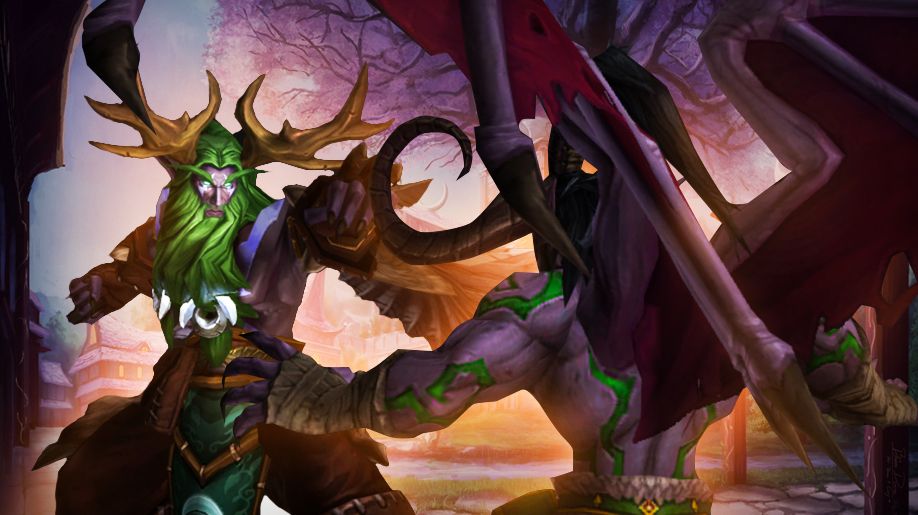
The War of the Ancients was a big conflict in Azeroth’s history, that happened 10,000 years before the First War. This war marked the first invasion of Azeroth by the Burning Legion, led by the dark titan Sargeras. The Highborne, the upper class of the Kaldorei Empire, were seduced by Sargeras’ promises of power. Queen Azshara and her advisor Xavius helped open a portal using the Well of Eternity to bring the Burning Legion into Azeroth.
Malfurion Stormrage, Tyrande Whisperwind, Illidan Stormrage, and Jarod Shadowsong led the Kaldorei Resistance against the Legion. Illidan betrayed them but helped to seal the portal and prevented Sargeras from entering Azeroth. As a result, they managed to push back the demonic forces
The war ended with the Great Sundering that shattered Azeroth’s single continent into several smaller ones. The Well of Eternity was destroyed, and Queen Azshara and her followers transformed into the naga.
The Rise of Human Kingdoms and the Horde
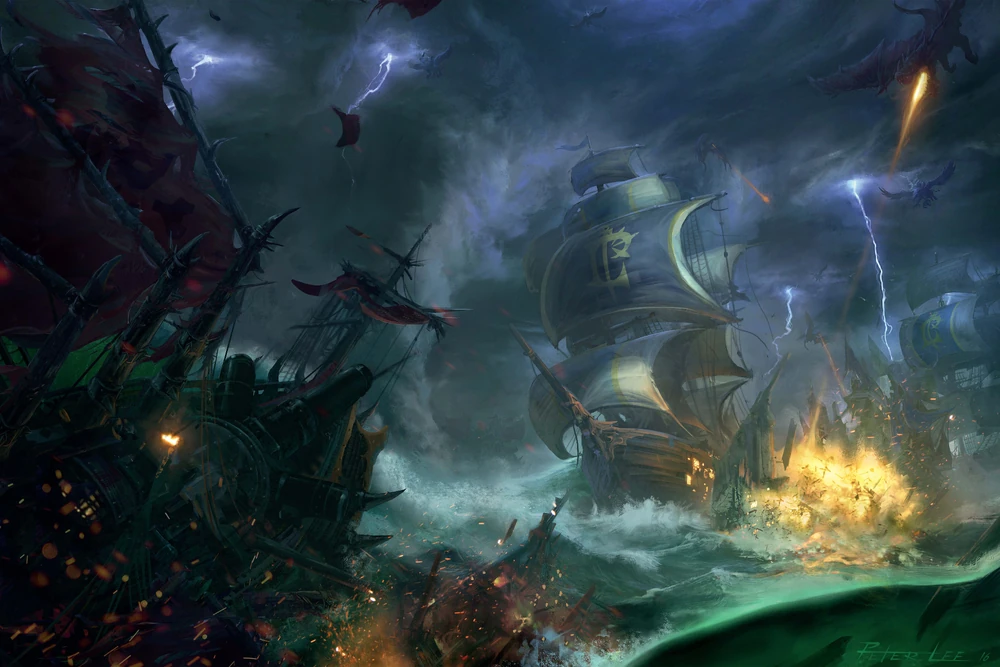
Azeroth’s history is richly woven with the rise of human kingdoms and the tumultuous emergence of the Horde.
The human kingdoms, sprouting from small settlements and tribes, gradually evolved into powerful states. Stormwind, Lordaeron, Gilneas, and Kul Tiras were among the prominent, each contributing uniquely to the realm’s cultural and military mosaic. Fortified by stone and steel, these kingdoms were beacons of human resilience and ambition, standing as testaments to humanity’s ability to survive and thrive in a world rife with magic and mystery.
Contrasting this human ascendancy, the arrival of the Orcs through the Dark Portal marked the beginning of a new, darker chapter. The Orcs, hailing from Draenor, were not mere invaders; they were refugees fleeing a dying world, manipulated and corrupted by the Burning Legion into a war-hungry Horde. This gateway between worlds, a marvel of arcane engineering, became the focal point of the first great clash between Azeroth’s natives and the extraplanetary Orcs, heralding the First War.
The First War saw the fall of Stormwind to the Horde. During this time, heroes like Anduin Lothar and King Llane Wrynn appeared, showing human resilience and bravery.
The Second War expanded the conflict to involve more races and factions. As a result, the Alliance of Lordaeron was formed, aiming to fight the growing orc threat. Key battles of this war include the siege of Lordaeron and naval clashes in the Great Sea.
Noteworthy Horde and Alliance leaders of this war include:
- Orgrim Doomhammer, Warchief of the Horde, represented orc honor and strength.
- King Terenas Menethil II of Lordaeron worked to unite human kingdoms against the Horde.
After these wars, there was an uneasy peace marked by political maneuvering, espionage, and old grudges. The Horde weakened and struggling with its identity, and the human kingdoms, dealing with internal conflicts and rebuilding, faced ongoing challenges.
The Scourge and the Lich King
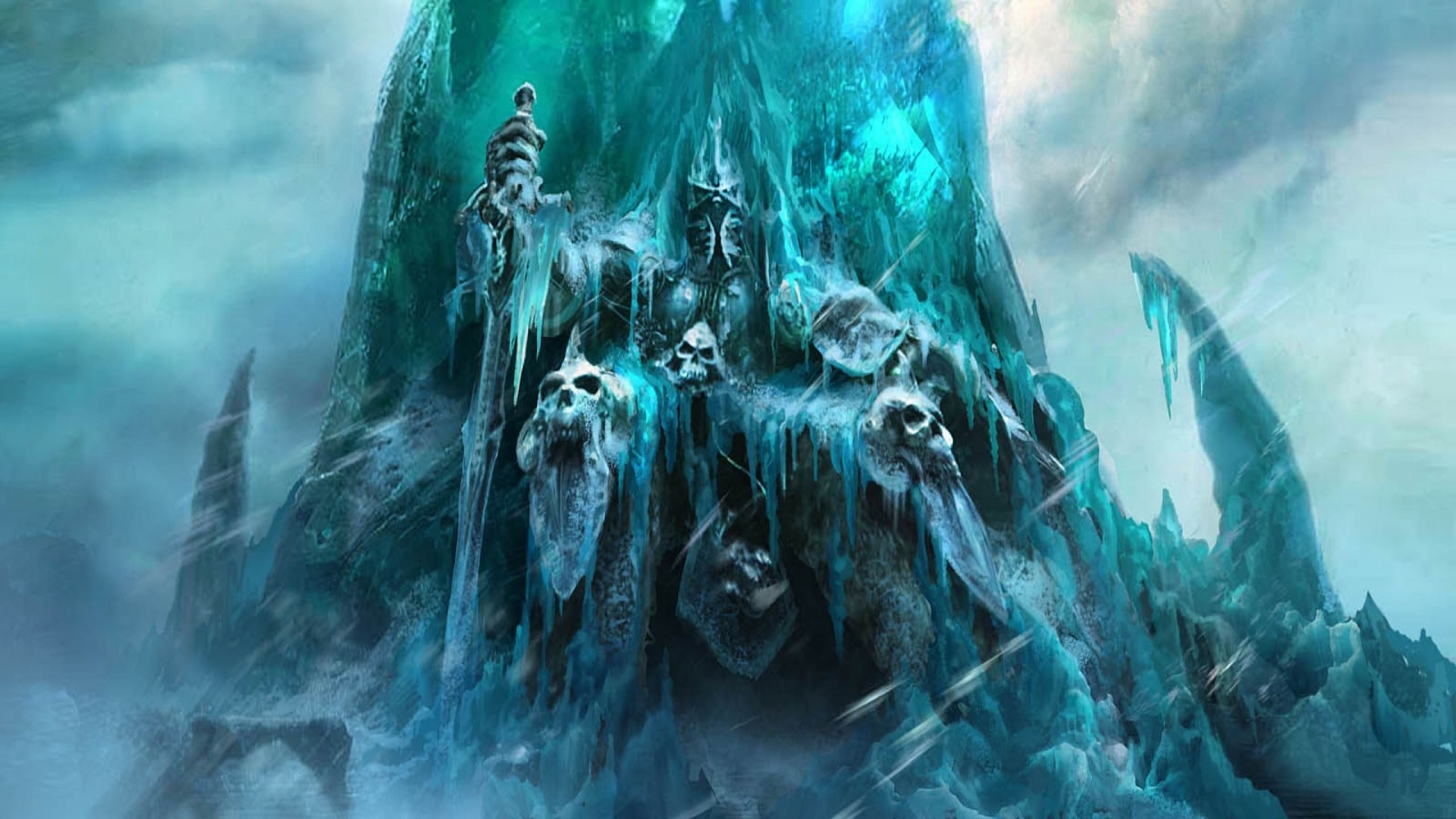
The Scourge was an undead army created by the Burning Legion, led by the dreadlord Mal’Ganis, to prepare Azeroth for invasion. The Lich King, originally the orc shaman Ner’zhul, was corrupted by the Legion and trapped in the Frozen Throne in Northrend. He controlled the Scourge and caused widespread terror. In “Wrath of the Lich King,” heroes of Azeroth confronted him in Northrend, culminating in the siege of the Icecrown Citadel and the eventual defeat of the Lich King.
Cataclysm: Deathwing’s Return
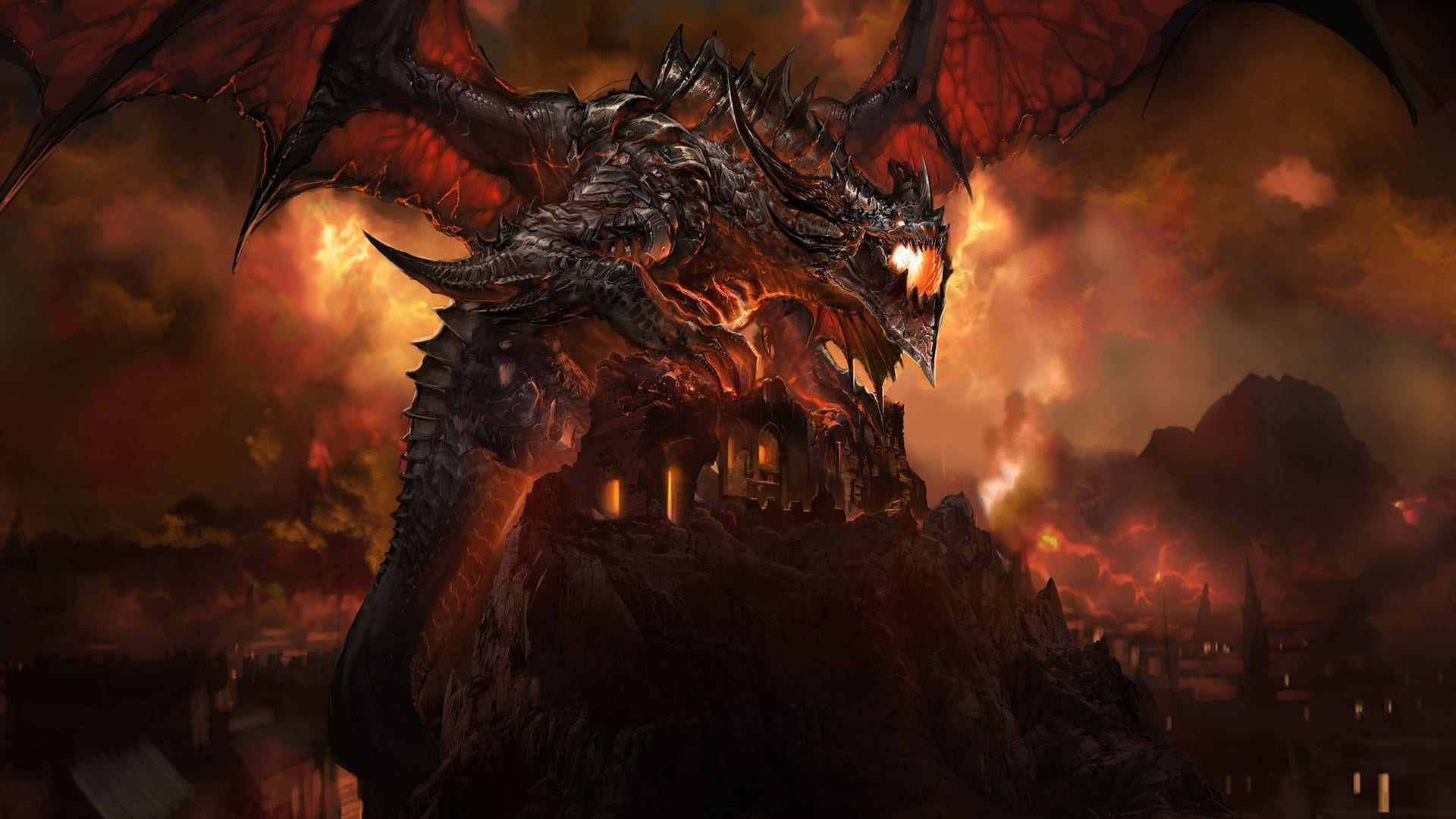
World of Warcraft’s third expansion, Cataclysm, revolves around the return of the corrupted dragon Deathwing, leader of the Black Dragonflight. Awakened from a long slumber, Deathwing causes massive earthquakes, tsunamis, and volcanic eruptions, reshaping Azeroth and attempting to fulfill a prophecy called the Hour of Twilight, which would lead to the victory of the Old Gods and the end of all life.
In response, Thrall, the shaman and former Warchief of the Horde, steps down to focus on healing the world, appointing Garrosh Hellscream as his successor. The expansion also introduces the worgen, cursed humans from Gilneas who join the Alliance after learning to control their curse with the help of the night elves.
Elemental lords like Ragnaros and Al’Akir side with Deathwing, while others like Therazane and Neptulon assist in defending Azeroth. Heroes of Azeroth defeat Ragnaros in the Firelands and Al’Akir at the Throne of Four Winds. The Black Dragonflight, corrupted by the Old Gods, faces near extinction, with Wrathion emerging as the last uncorrupted black dragon determined to protect Azeroth.
The final battle sees Thrall and the Dragon Aspects using the Dragon Soul artifact to defeat Deathwing. In the aftermath, Garrosh Hellscream’s aggressive actions, including bombing the Alliance city of Theramore, escalated the conflict between the Horde and the Alliance, leading to a renewed all-out war.
Discovery of Pandaria and the Warlords of Draenor

Pandaria, hidden for millennia, was discovered and revealed as a land rich in ancient mysteries. Adventurers uncovered the secrets of the Pandaren and faced the threat of the Sha. In WoD, players traveled to an alternate Draenor to fight the Iron Horde, led by Grommash Hellscream. This expansion explored a “what if” scenario, showing Draenor before it became Outland.
Battle for Azeroth and The Legion’s Return
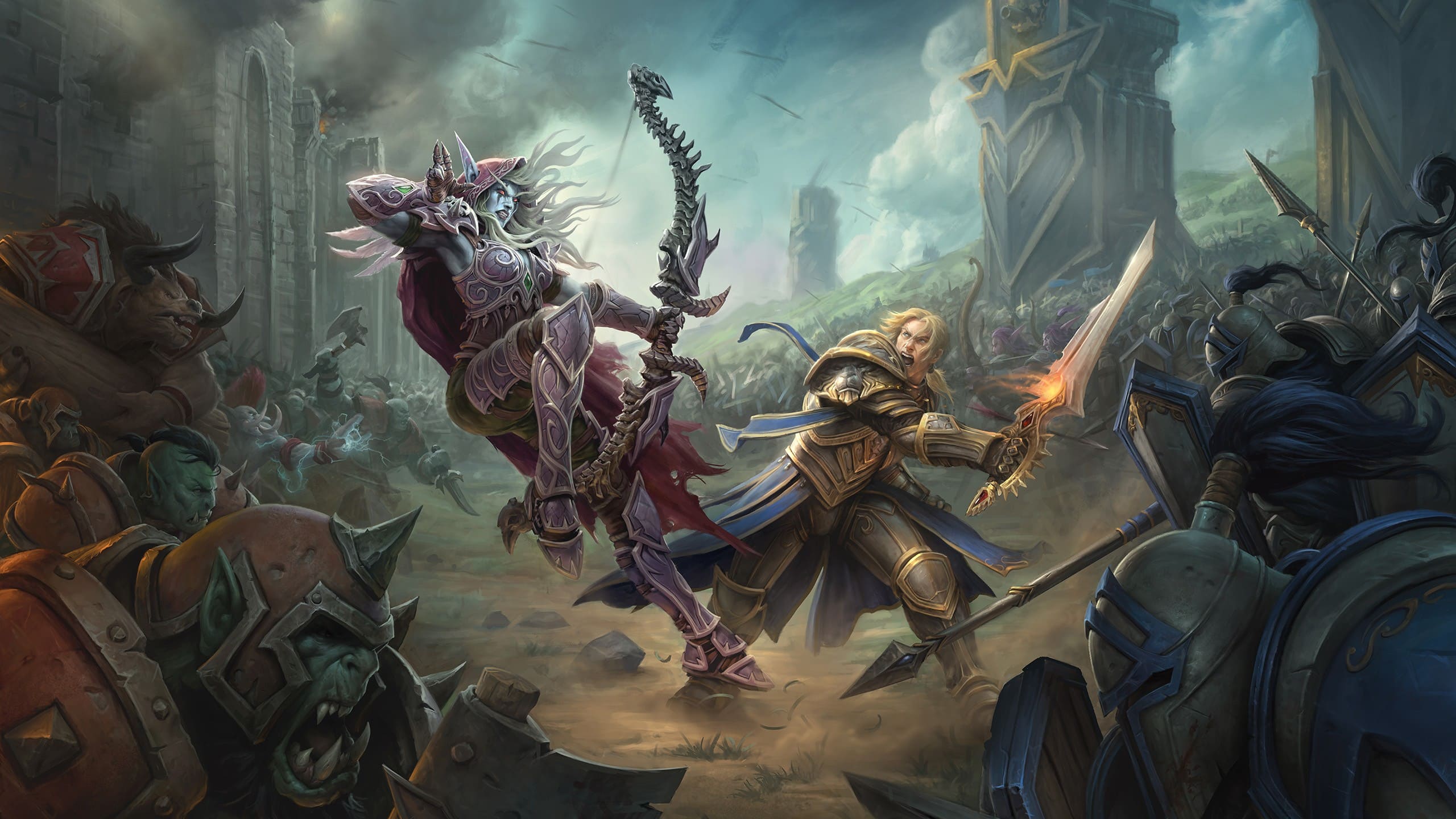
The third Burning Legion invasion, led by Sargeras, brought chaos to Azeroth. The Legion attacked the Broken Isles, and heroes from the Alliance and Horde fought back in battles like the Broken Shore and Argus. Illidan Stormrage played a key role in defeating the Legion.
After the Legion’s defeat, the “Battle for Azeroth” began, fueled by the discovery of Azerite. Tensions between the Horde and Alliance escalated with events like the burning of Teldrassil and the siege of Lordaeron. New continents, Kul Tiras and Zandalar, were discovered, leading to new allies and conflicts, and the final battle against the Old God N’Zoth.
Heart of Azeroth
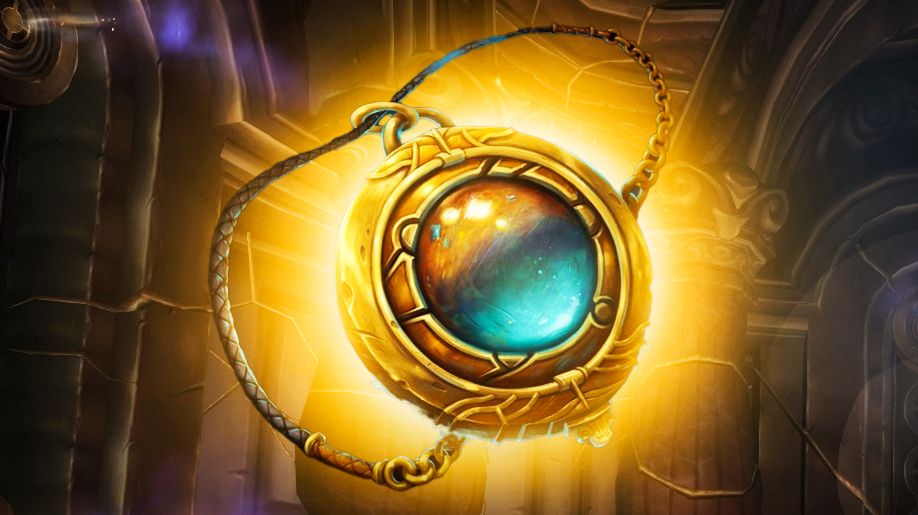
The Heart of Azeroth in Battle for Azeroth was a significant feature that reshaped the player experience in World of Warcraft. This legendary neckpiece, central to the WoW BFA expansion, functioned as a unique power progression system for players.
- Acquisition and Leveling Up: Players received the Heart of Azeroth from Magni Bronzebeard early in the BFA expansion. The artifact’s power level, or “item level,” increased by absorbing Azerite, a resource obtained through various activities like completing Azerite World Quests, dungeons, raids, and other in-game events. As players collected Azerite, the Heart of Azeroth leveled up, enhancing its potency.
- Azerite Traits and Armor: A pivotal aspect of the Heart of Azeroth system was its interaction with Azerite Armor and gear pieces with specific slots (head, shoulders, and chest). These armor pieces featured Azerite Traits – special abilities or bonuses players could unlock. Each piece had multiple trait rings, with the innermost rings offering the most potent enhancements. Players could select one trait per ring, customizing their character’s abilities based on their playstyle, role, or preferences. Unlocking these traits required a certain level of the Heart of Azeroth, incentivizing players to gather Azerite continuously.
- Essences: Later in the BFA expansion, a major update introduced the Essence system. Essences were powerful abilities and passive effects slotted into the Heart of Azeroth. Players earned these Essences through various means, including PvE content like raids and dungeons, PvP activities, and reputation grinds. Each Essence had a Major (active) ability and a Minor (passive) effect, offering strategic choices depending on a player’s role or the content they were tackling. The system added another layer of depth and customization to the Heart of Azeroth.
- Gameplay Impact: The Heart of Azeroth system was integral to character progression in BFA. It offered players flexibility in PvP and PvE playstyles.
WoW Shadowlands
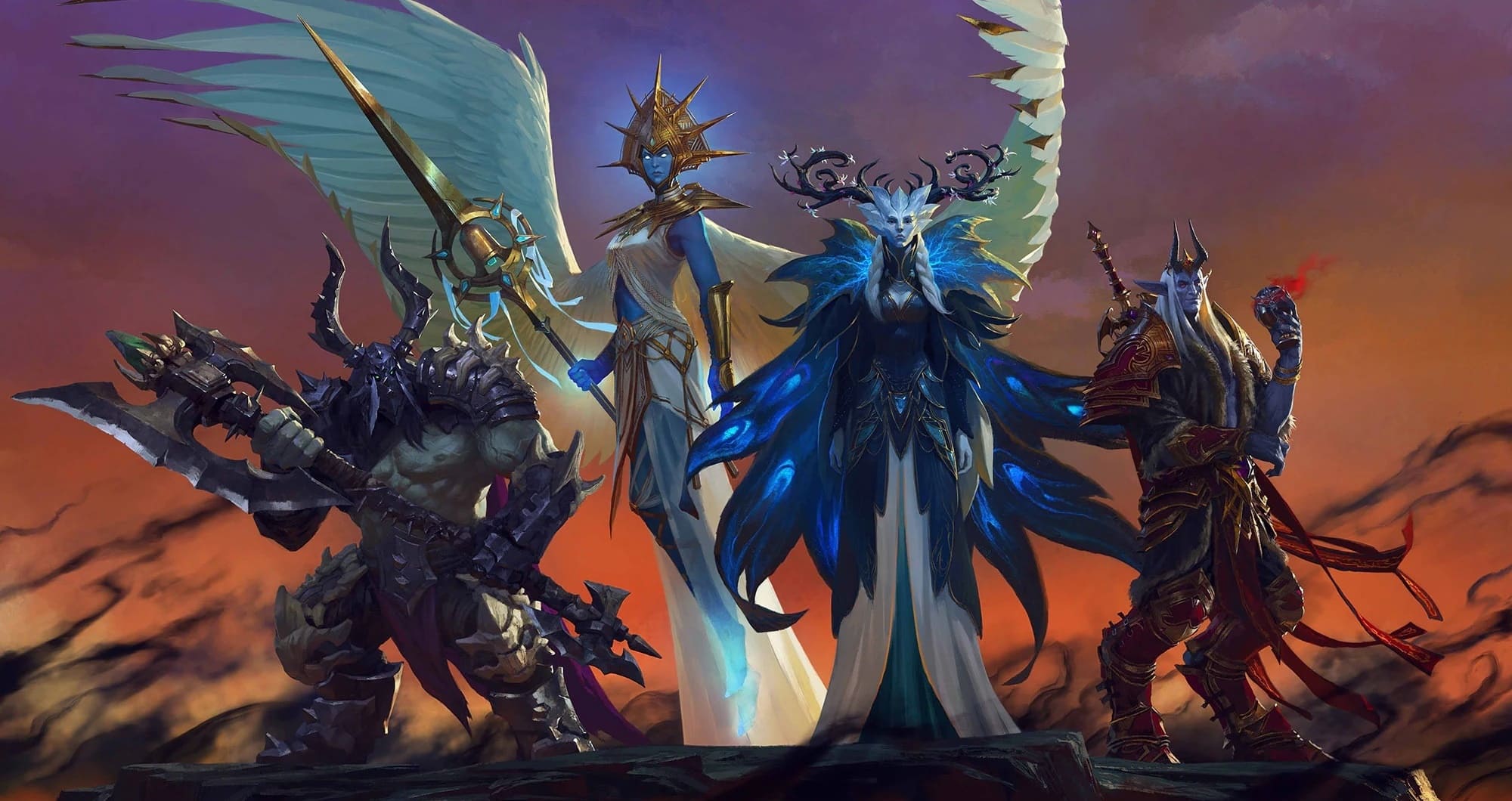
Shadowlands is the 8th WoW expansion, where players explore the afterlife.
When a soul arrives in the Shadowlands, it is judged by the Arbiter and sent to the most suitable afterlife. The main areas in the Shadowlands are Ardenweald, Bastion, Maldraxxus, and Revendreth.
The story of this expansion happens around Sylvanas Windrunner who broke the barrier between life and death, leading to chaos. The Jailer, once the Arbiter, was banished for trying to disrupt the balance and became the ruler of the Maw, the worst part of the Shadowlands where evil souls are sent.
World of Warcraft Dragonflight
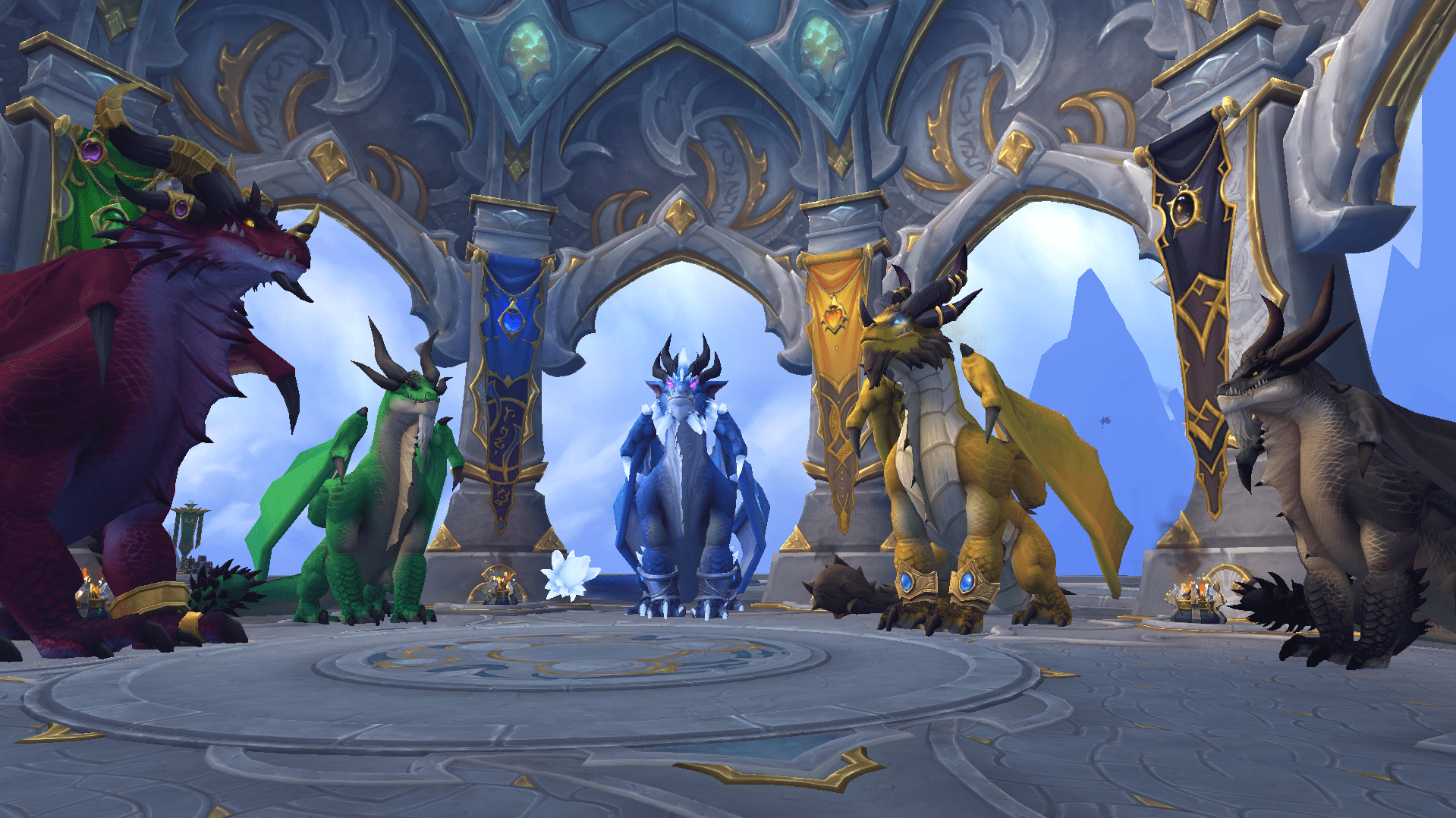
The Dragon Isles, once hidden for 10,000 years, are now reawakened. The four zones—Waking Shores, Ohn’ahran Plains, Azure Span, and Thaldraszus—are full of life and energy again.
Hearing of the Dragon Isles being under attack, the Horde and Alliance rush to help. They find the situation worse than expected, with the Primalists, led by Kurog Grimtotem, invading and freeing their leader, Raszageth. The heroes manage to secure the Ruby Life Pools and help the Black Aspects reclaim the Obsidian Throne, though a power struggle between Wrathion and Sabellian remains.
In Ohn’ahran Plains, Primalist leader Koroleth and Balakar Khan attack the Green Dragonflight. They capture the wild god Ohn’ahra but fail to kill Merithra, the daughter of the Green Dragonflight. Koroleth is eventually defeated.
Raszageth leads an attack on the Azure Span, targeting Vakthros and its ley lines. Despite a strong defense from the Kirin Tor and Blue Dragonflight, the territory falls under Primalist control.
The Primalists then invade Valdrakken, the dragon capital. The heroes defeat them and confront the traitor Eranog. Despite defeating Raszageth, her cousins are freed.
After Raszageth’s defeat, the heroes and Scalecommander Viridia work to reclaim the Forbidden Reach.
The Primalists, Scalecommander, and other factions clash in Zaralek Cavern. The heroes meet a new race, the Loamm Niffen, and continue their adventures. After that, they face Sarkareth in Aberrus, the Shadowed Crucible, leading to his defeat.
But the Dragonflight’s adventures don’t end in Aberrus: in the 3rd raid, we’re offered to explore the secrets of the Emerald Dream and save the World Tree from Fyrakk, the Blazing, and his allies.
Map of Azeroth and All Leveling Locations
Dragonflight Leveling Zones (Levels 60-70)
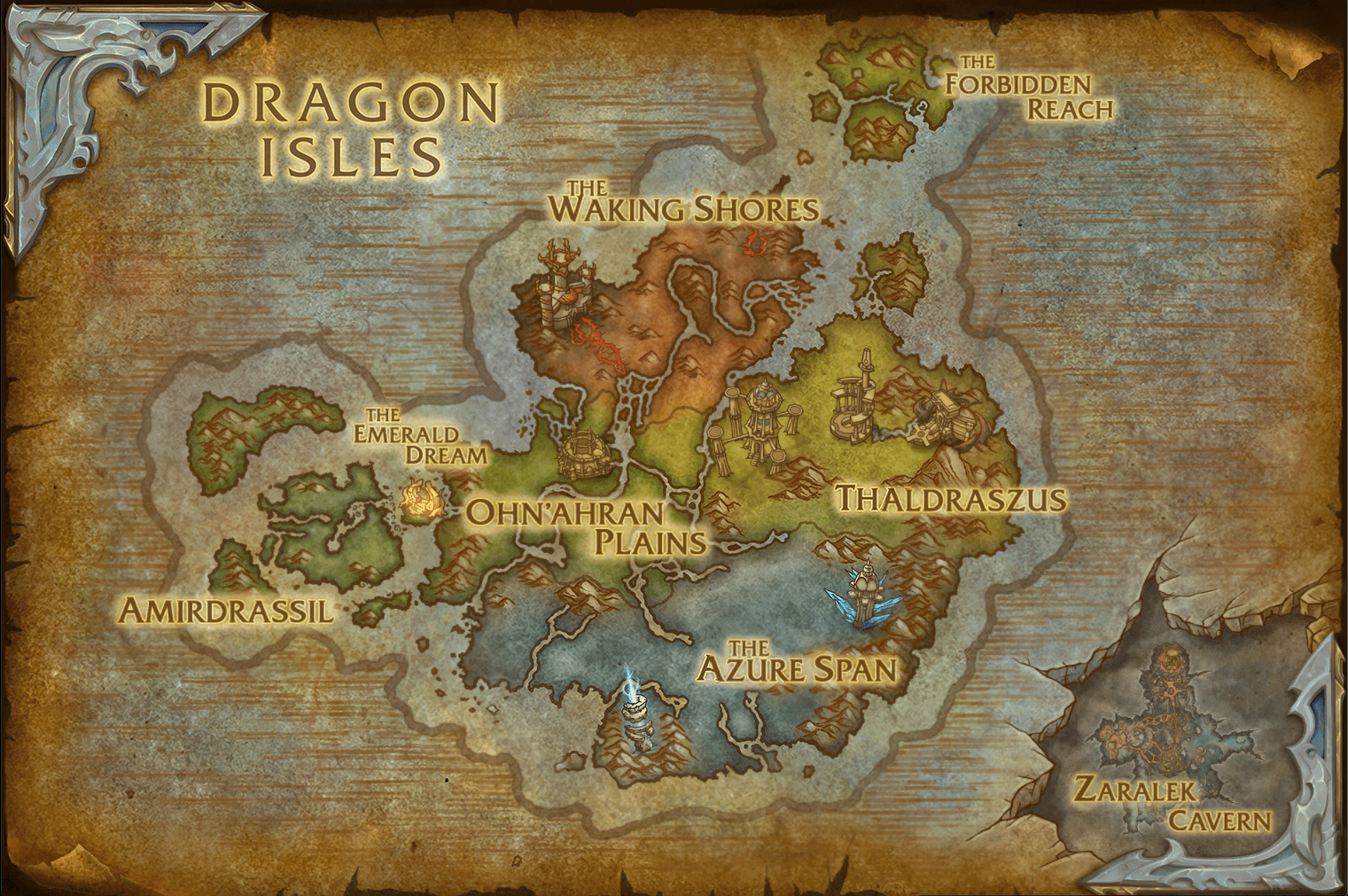
- Continent: Dragon Isles
- The Waking Shores: This is typically the starting zone in Dragonflight, where players first encounter the Dragon Isles.
- Ohn’ahran Plains: A zone characterized by its vast, open landscapes and continues the leveling journey.
- The Azure Span: Known for its majestic and sprawling vistas, this zone further advances the player’s leveling experience.
- Thaldraszus: As one of the later zones in the leveling process, it is rich in lore and ties closely to the Dragon Aspects.
Shadowlands Leveling Zones (Levels 50-60)
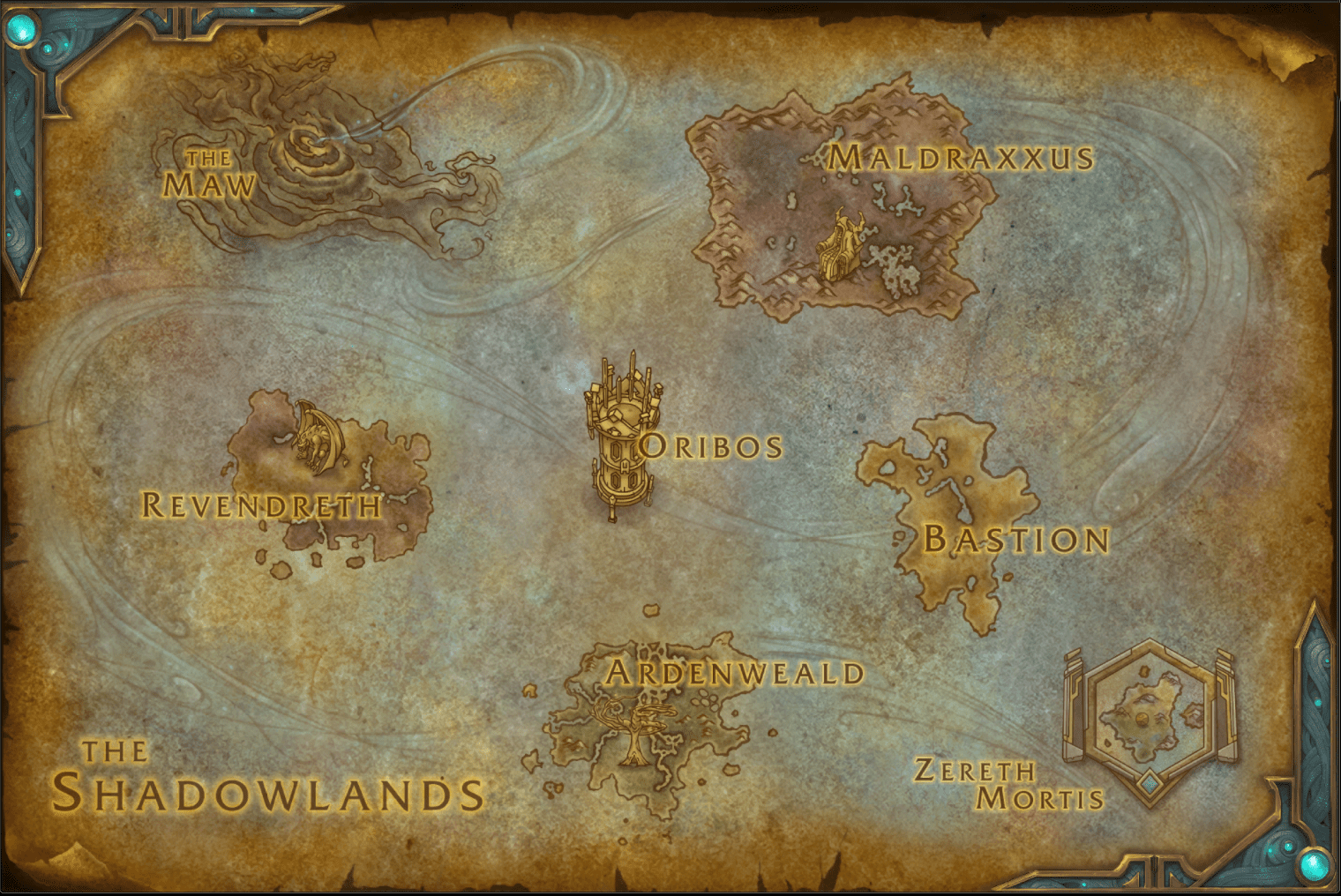
- Continent: Shadowlands
- Bastion: A serene realm of the Kyrian covenant, characterized by its gleaming architecture and ethereal landscapes.
- Maldraxxus: The domain of the Necrolord covenant, featuring a war-torn, necromantic environment.
- Ardenweald: A mystical and ethereal forest, home to the Night Fae covenant.
- Revendreth: A gothic, vampire-themed zone ruled by the Venthyr covenant.
Battle for Azeroth Zones (Levels 10-50)
- Continent: Kul Tiras, Zandalar
- Kul Tiras: Comprising Drustvar, Tiragarde Sound, and Stormsong Valley for Alliance players.
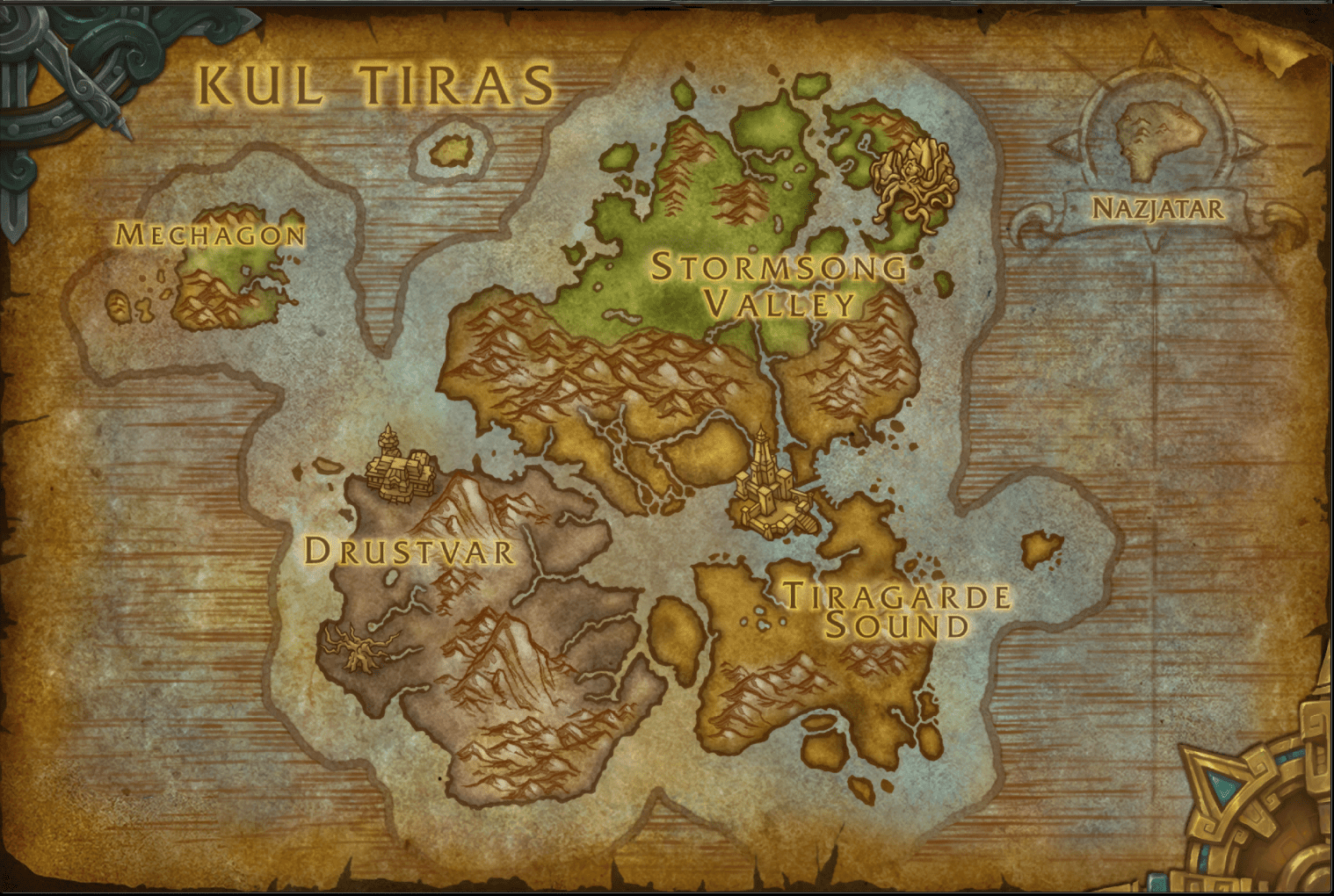
-
- Zandalar: Including Zuldazar, Nazmir, and Vol’dun, for Horde players.
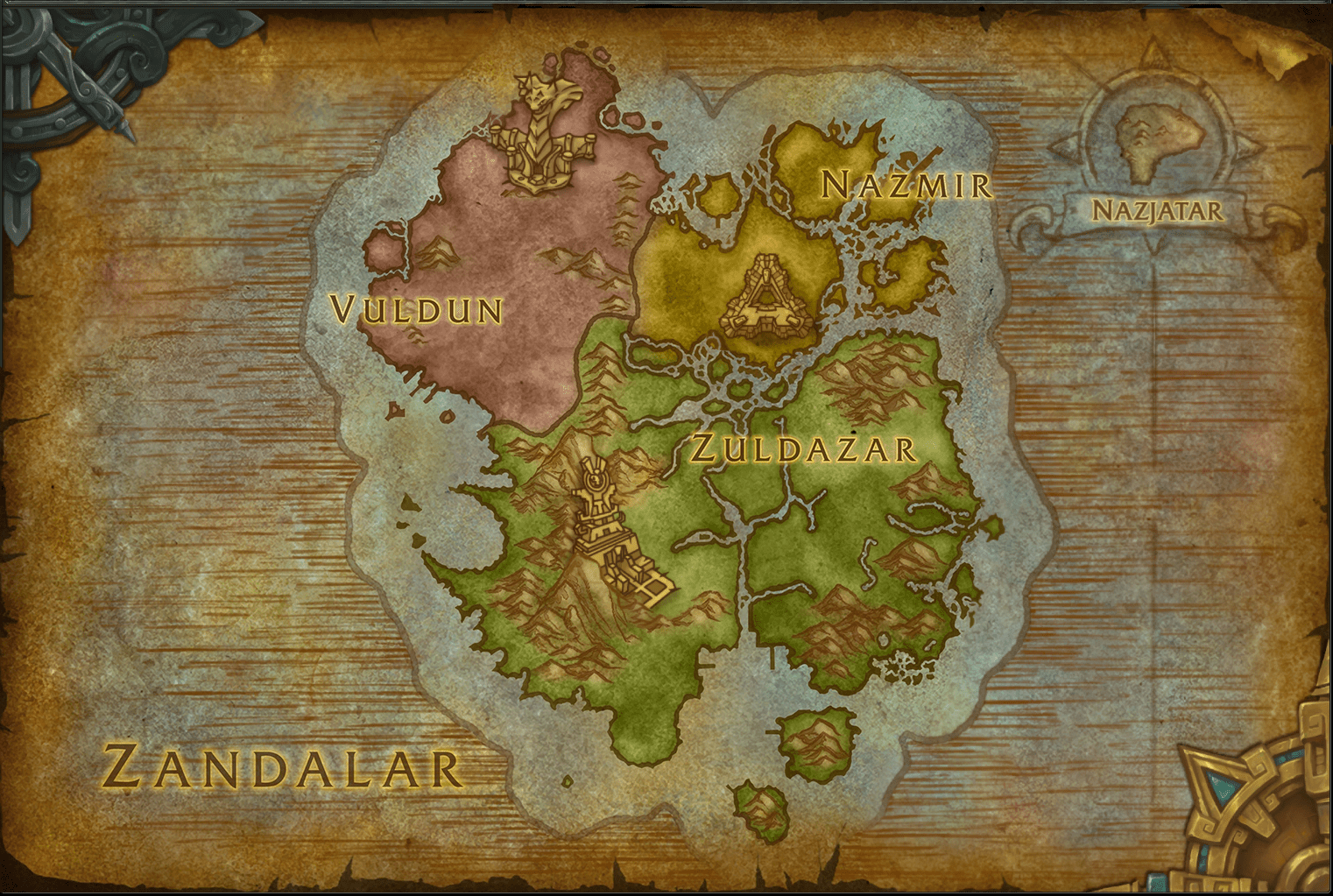
Legion Zones (Levels 10-50)
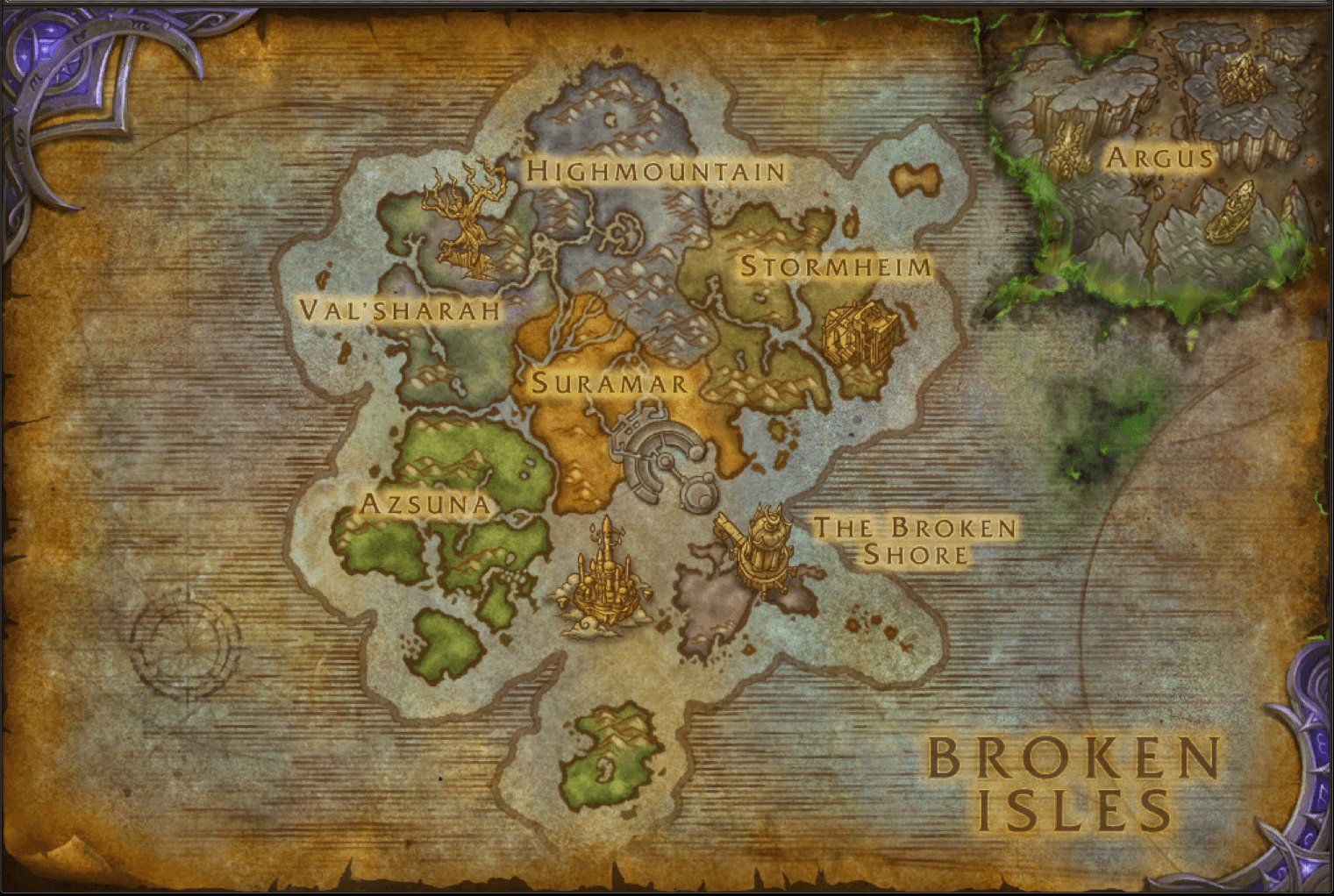
- Continent: Broken Isles
- Azsuna
- Val’sharah
- Highmountain
- Stormheim
- Suramar (primarily a max-level zone)
Warlords of Draenor Zones (Levels 10-50)
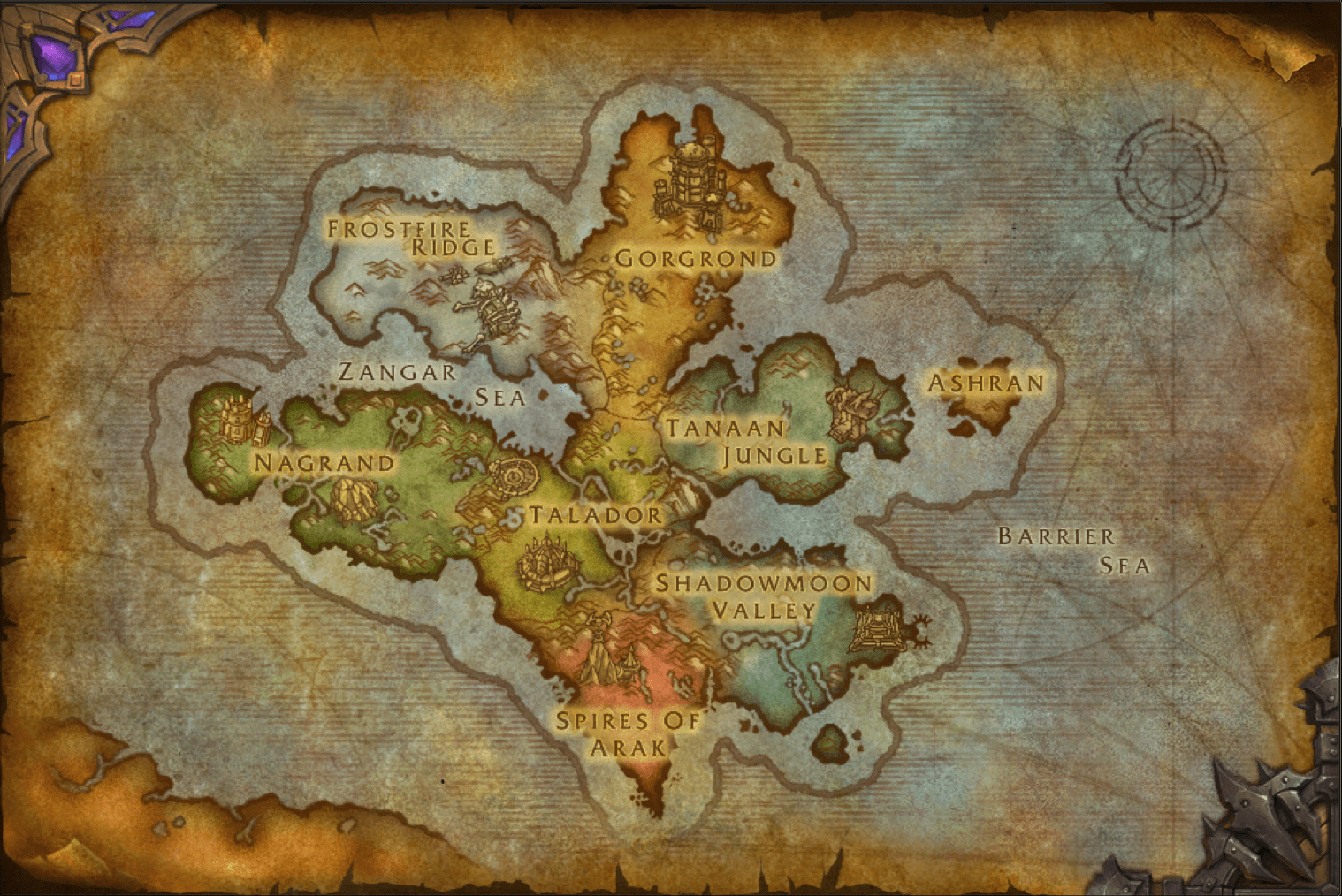
- Continent: Draenor
- Frostfire Ridge (Horde)
- Shadowmoon Valley (Alliance)
- Gorgrond
- Talador
- Spires of Arak
- Nagrand
Mists of Pandaria Zones (Levels 10-50)
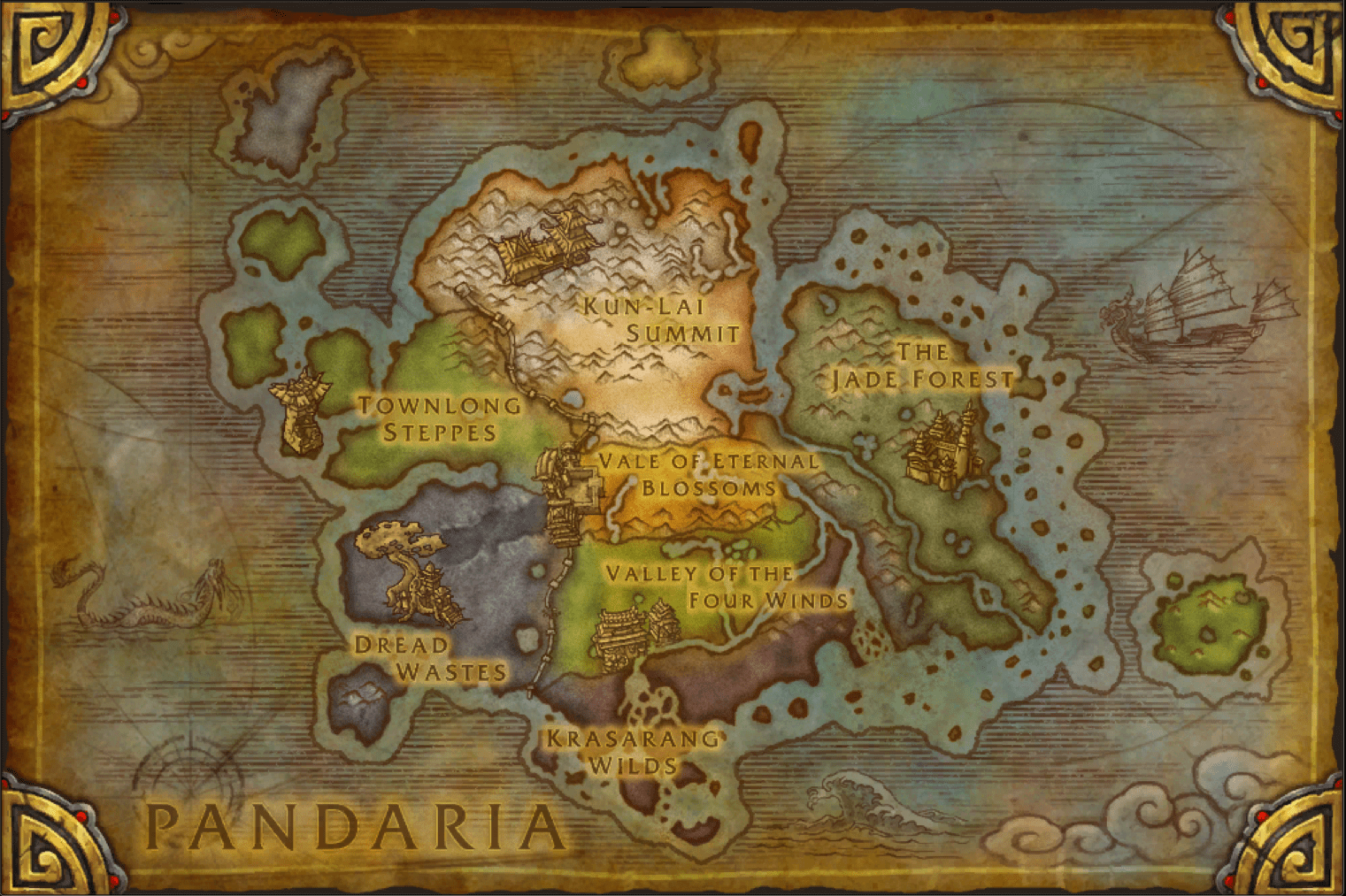
- Continent: Pandaria
- The Jade Forest
- Valley of the Four Winds
- Krasarang Wilds
- Kun-Lai Summit
- Townlong Steppes
- Dread Wastes
Cataclysm Zones (Levels 10-50)
- Continent: Azeroth (revamped zones), Deepholm
- Mount Hyjal
- Vashj’ir
- Deepholm
- Uldum
- Twilight Highlands
Wrath of the Lich King Zones (Levels 10-50)
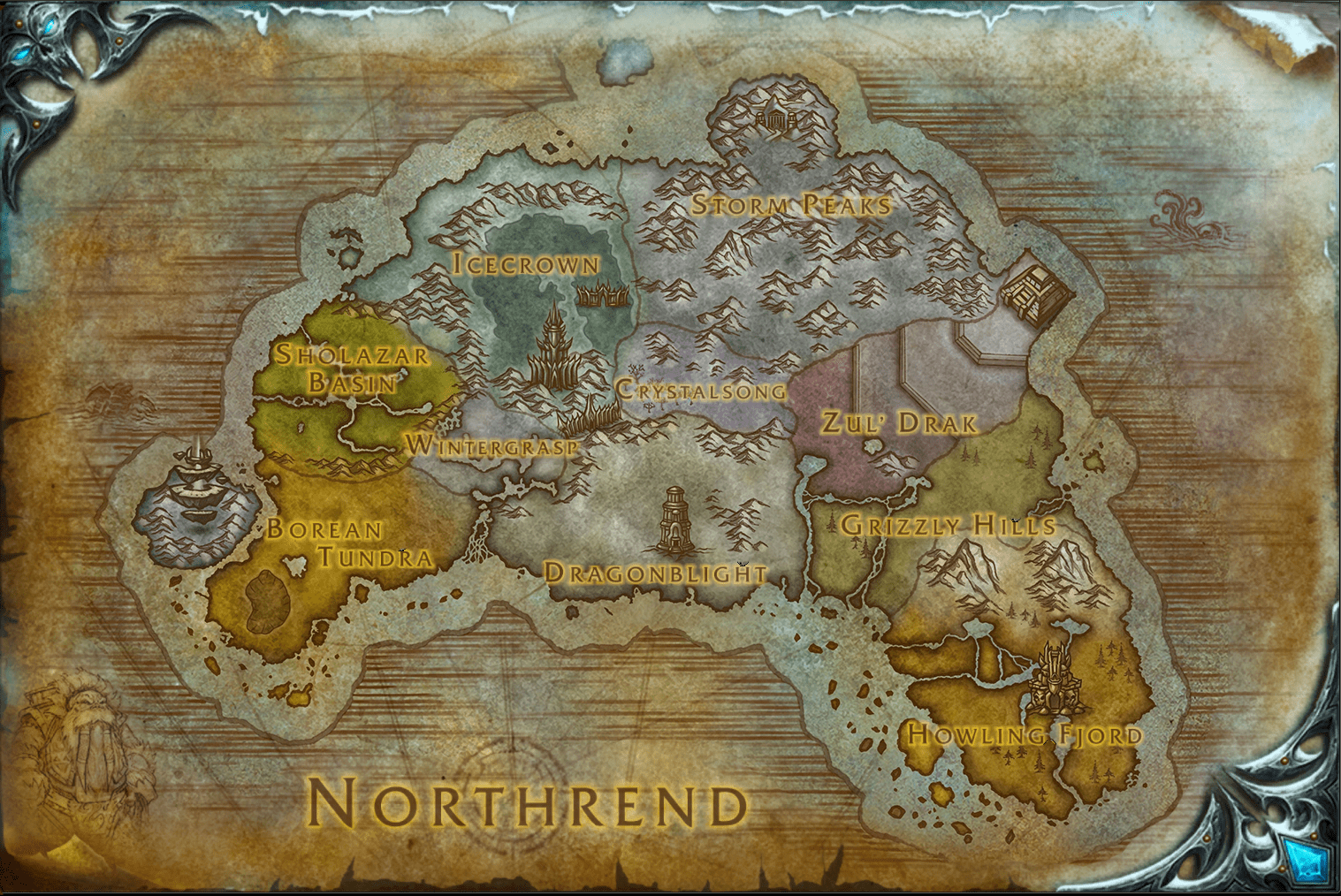
- Continent: Northrend
- Borean Tundra
- Howling Fjord
- Dragonblight
- Grizzly Hills
- Zul’Drak
- Sholazar Basin
- The Storm Peaks
- Icecrown
The Burning Crusade Zones (Levels 10-50)
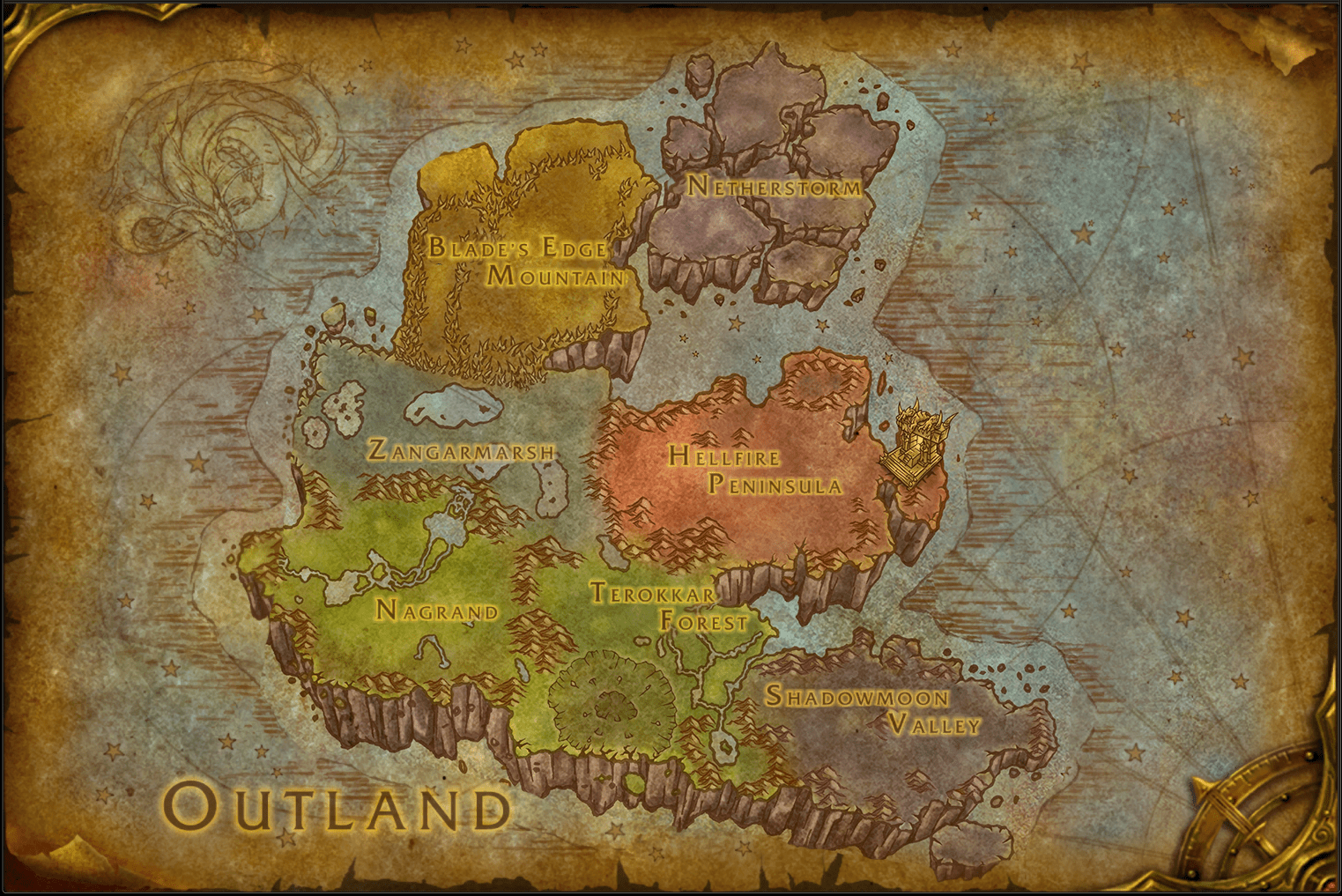
- Continent: Outland
- Hellfire Peninsula
- Zangarmarsh
- Terokkar Forest
- Nagrand
- Blade’s Edge Mountains
- Netherstorm
- Shadowmoon Valley
Classic WoW Zones (Levels 1-60)
- Continent: Eastern Kingdoms, Kalimdor
- Zones: Various across both continents
These include multiple zones for both early and later leveling, such as Elwynn Forest, Dun Morogh, Durotar, Tirisfal Glades, Westfall, Redridge Mountains, Stonetalon Mountains, Ashenvale, and many others, now scaled for levels 1-50.
With the introduction of the level scaling system in the game, players can choose various paths and zones for leveling, providing flexibility and a personalized leveling experience.
Changes in Azeroth’s Geography Through Expansions
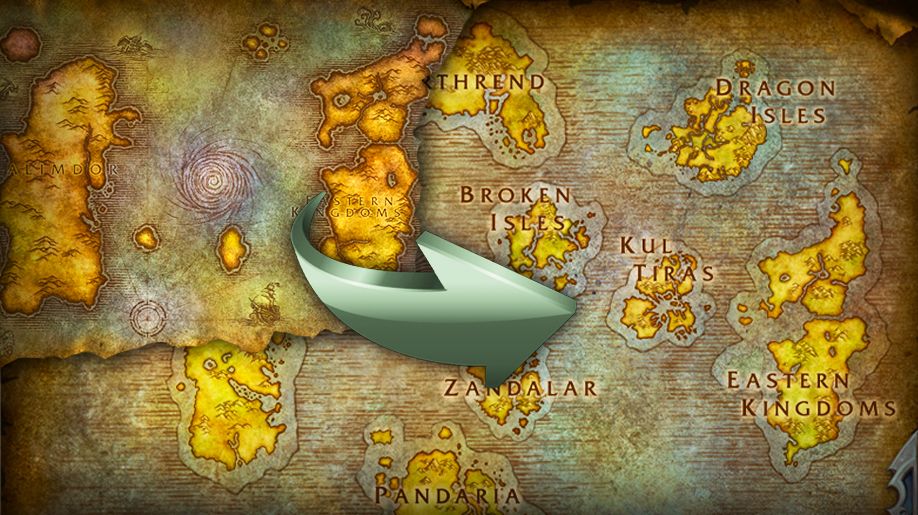
The geography of Azeroth in World of Warcraft has changed significantly with each expansion.
- Originally, Azeroth had two main continents: Eastern Kingdoms and Kalimdor. These lands are full of ancient kingdoms, forests, mountains, and deserts.
- The Burning Crusade expansion introduced Outland, once known as Draenor, the Orcs’ homeland. This shattered world with floating islands and strange skies was the game’s first venture into otherworldly terrains.
- Wrath of the Lich King took players to Northrend, a frozen wasteland ruled by the Lich King. Its icy landscapes were full of scorge, impressive soundtracks, and unforgettable raids and locations.
- Cataclysm drastically changed Azeroth’s original continents. Familiar zones were destroyed or transformed due to Deathwing’s return, making this expansion unique in altering existing areas instead of adding new ones.
- Mists of Pandaria unveiled the hidden continent of Pandaria, inspired by Asian culture. This lush, peaceful land provided a stark contrast to the war-torn regions of previous expansions.
- Warlords of Draenor took players back in time to see Draenor before it was shattered, showing the Orcish homeworld in its original form.
- Legion introduced the Broken Isles, a region rich in Night Elf history and the place of the demons’ invasion.
- Battle for Azeroth focused on the conflict between Horde and Alliance and introduced the following new zones: Kul Tiras and Zandalar. These continents reflected the cultures and aesthetics of their respective factions.
- Shadowlands took players to the afterlife. This expansion moved beyond traditional locations introduction and offered us to explore completely new territories that are located beyond life and death.
